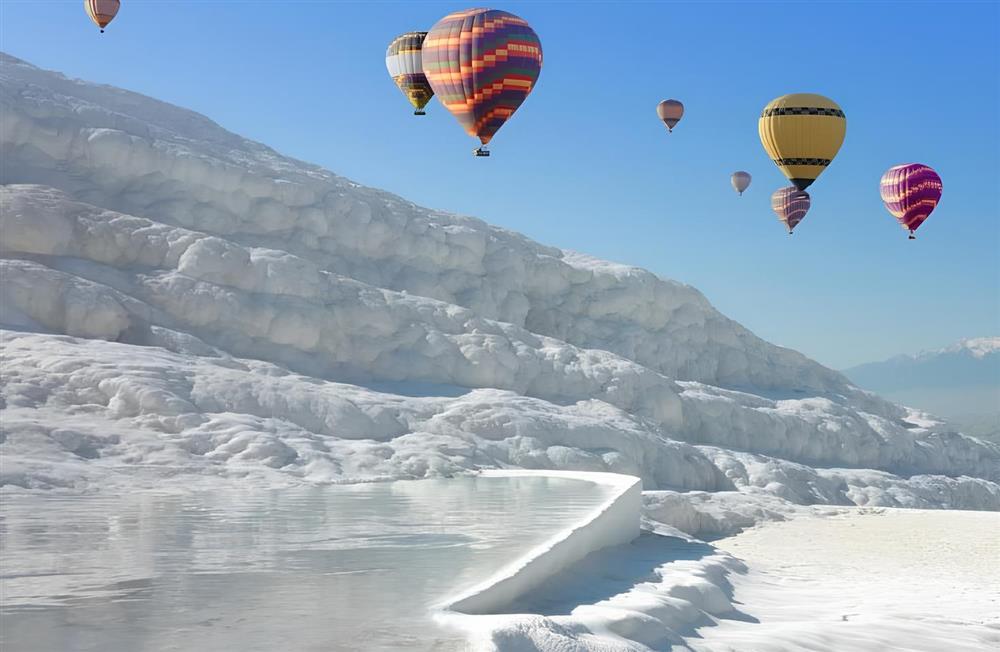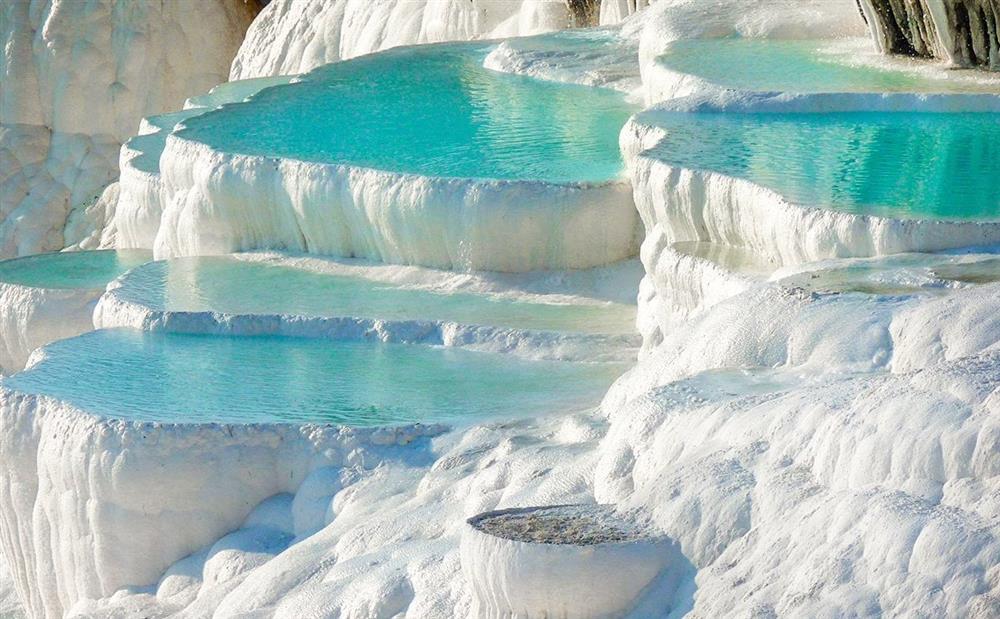How Are Travertines Formed? How Were Pamukkale Travertines Formed?
Date : 30.07.2024
Travertines, one of the karst accumulation forms and especially located in Pamukkale, Denizli, have an important place worldwide.
In this article, we will inform you about topics such as how travertines are formed and how Pamukkale travertines were formed. Let's learn together how travertines were formed!
What is Travertine?
Before addressing how travertines are formed, let's start by learning what travertine is.
Travertine is a chemical sedimentary rock formed by the expansion of carbonate and calcium. Travertines, which are formed by both chemical and physical movements, are frequently seen especially on the sides of hot springs.
How Are Travertines Formed?
Travertines are a type of chemical sedimentary rock. As a result of various chemical and physical reactions, sedimentations can occur in underground mines. The continuity of these sedimentations allows the formation of travertines.
Hot water sources contribute to the formation of travertines in Pamukkale. These spring waters have been used since ancient times.
How Were Pamukkale Travertines Formed?
Pamukkale travertines are located in Denizli. These travertines, also known as "White Paradise", have the feature of being one of the 18 places included in the UNESCO World Heritage List.
The formation of these travertines in Denizli is due to thermal waters. In this region, there are approximately 17 hot water sources with temperatures ranging from 33-100 degrees.
This thermal water, which contributes to the formation of travertines, comes to the region where the travertines are located after leaving its source and causes sedimentation in the levels of the travertines.
Pamukkale travertines are formed when water, which contains a high amount of calcium hydrogencarbonate, comes into contact with oxygen in the air, causing carbon dioxide and carbon monoxide to evaporate, resulting in carbonate precipitation.
Where Are Travertines Seen?
One of the most beautiful examples of travertines in the world is the Pamukkale travertines located in the Pamukkale district of Denizli.
In addition to Pamukkale travertines, travertines are also found in the surroundings of Antalya.
Travertine is also known as a building material used together with marble.
There are travertine quarries in many regions of Turkey such as Burdur (Bucak), Denizli, Mersin (Mut), Sivas.
The materials produced in these quarries are used in the domestic market as blocks, rubble, or processed in factories in sizes, and in addition, they are exported abroad.
What Are the Characteristics of Pamukkale Travertines?
Pamukkale travertines are an important formation included in the UNESCO World Heritage List.
The characteristics of these travertines are as follows:
- They have a mostly fibrous and concentric appearance.
- They are formed by the rapid precipitation of calcium carbonate at the mouth of the hot spring or in the limestone cave.
- There are white, flesh-colored, cream-colored, and rusty varieties.
How to Get to Pamukkale Travertines?
There are many options you can choose to go to Pamukkale travertines. One of them is the minibuses or municipal buses departing from Denizli center.
If you're thinking of going in your private vehicle, head from Denizli center towards Denizli Ring Road D320 / D585 / E87. Turn onto Pamukkale Boulevard from Salihağa Intersection. Continue on Pamukkale Boulevard towards Yeniköy.
At the end of Pamukkale Boulevard, continue towards Yeniköy via Mehmet Akif Ersoy Boulevard.
Turn onto Yeniköy Road and continue. Then, turn onto Pamukkale Road.








